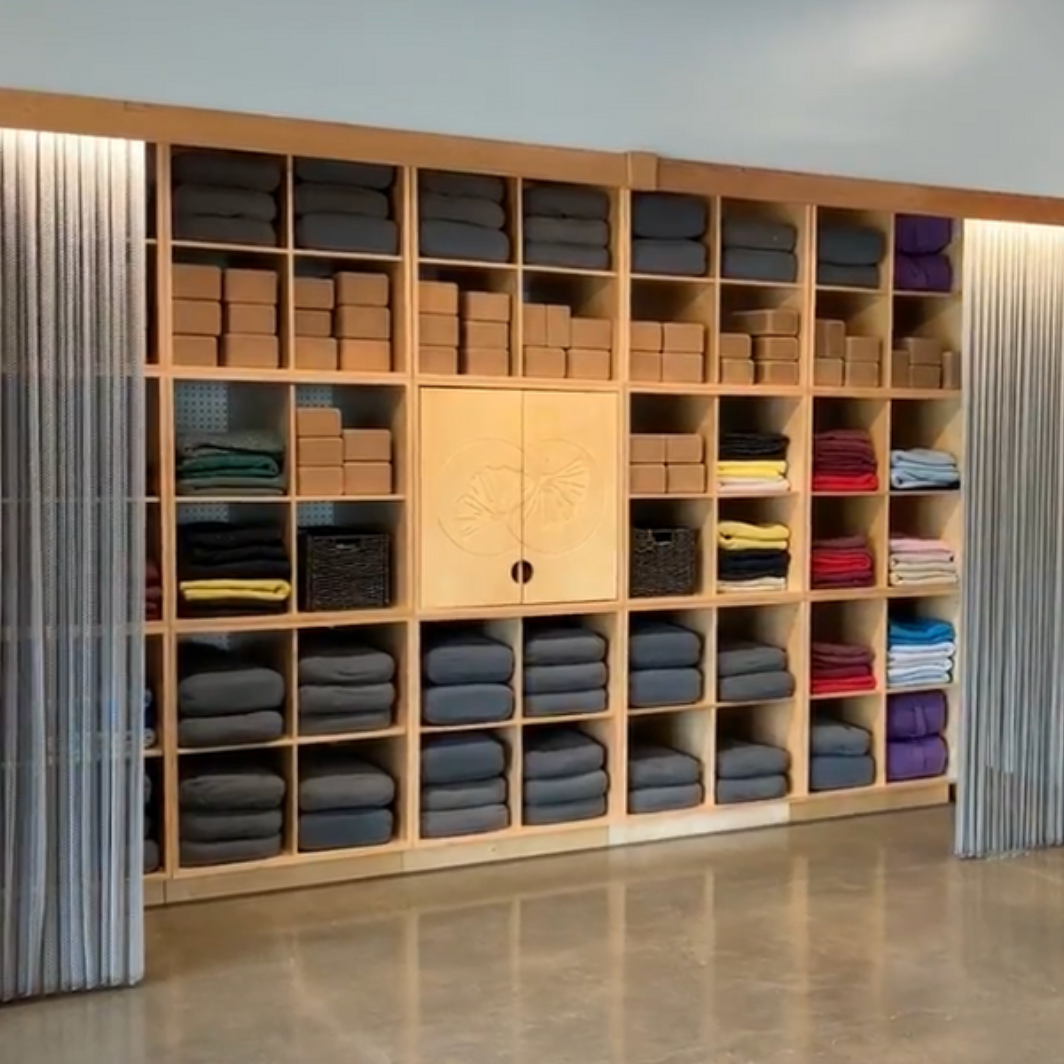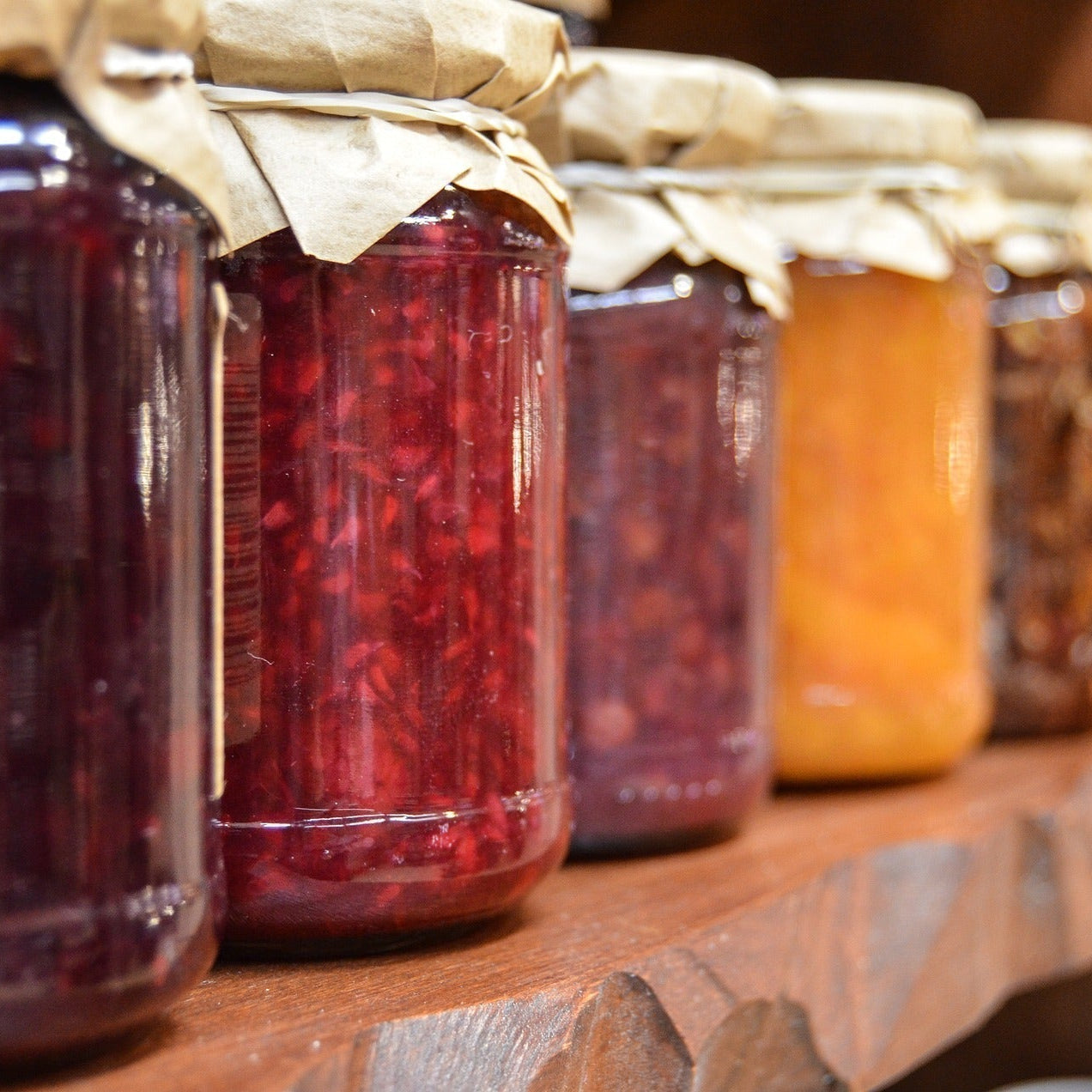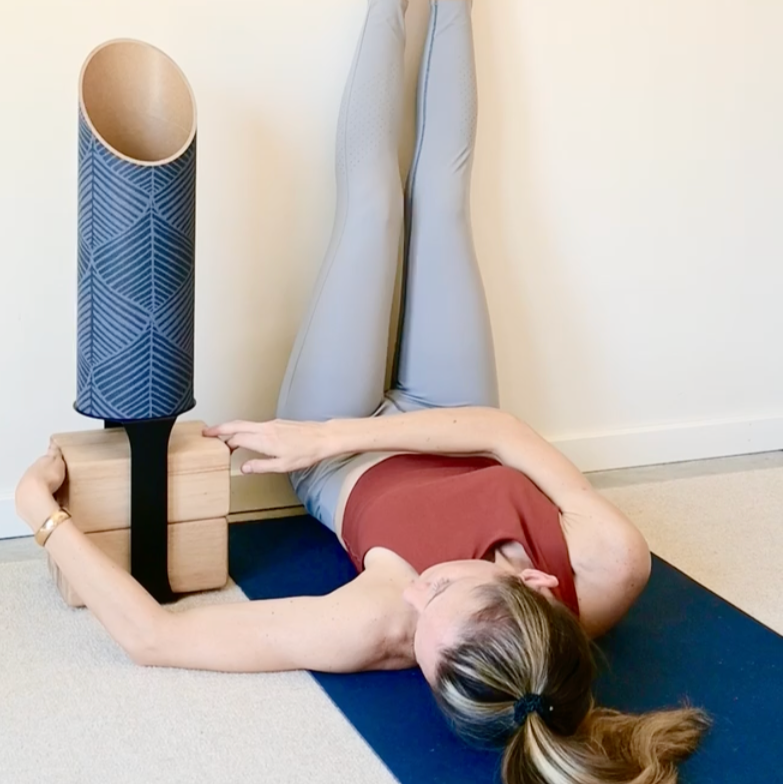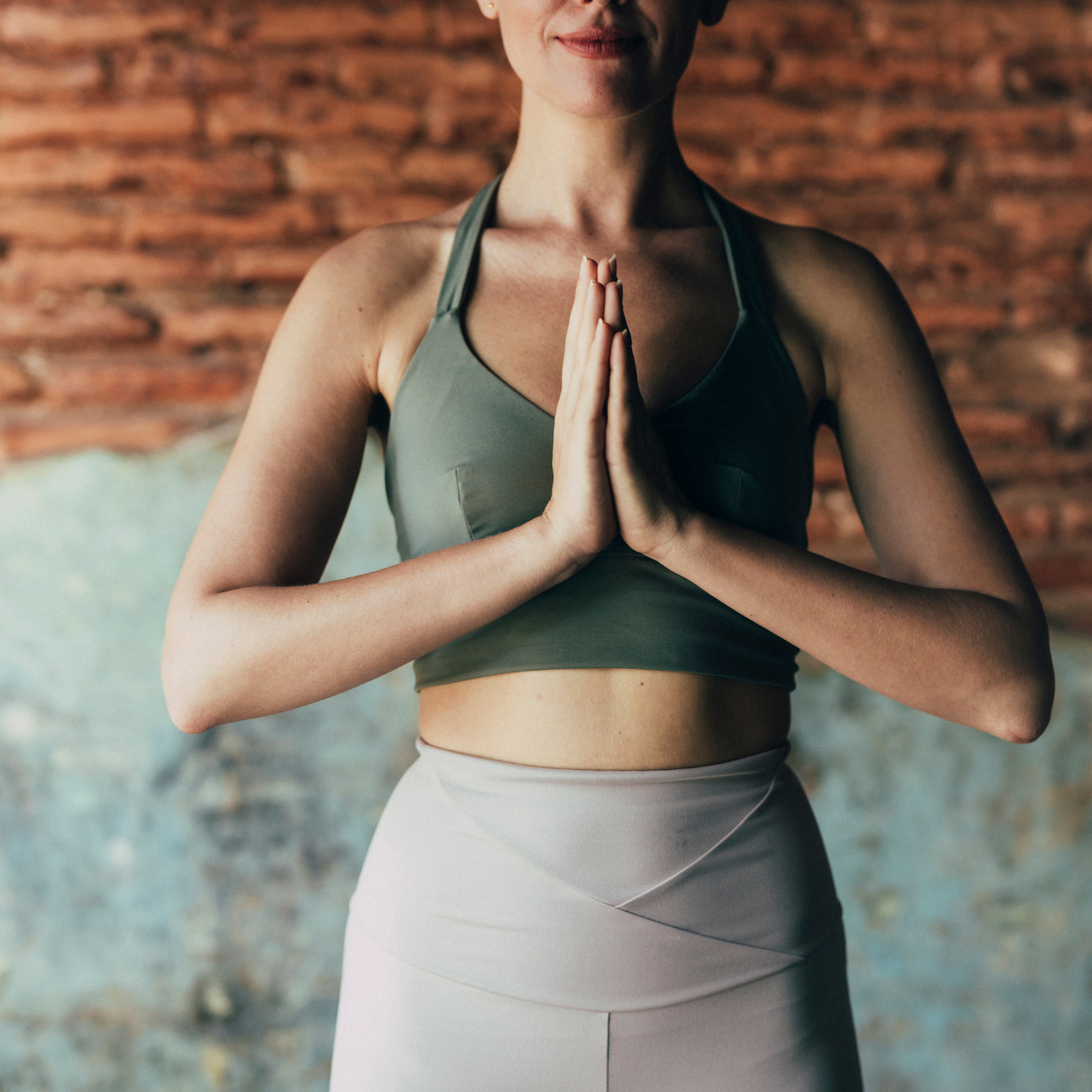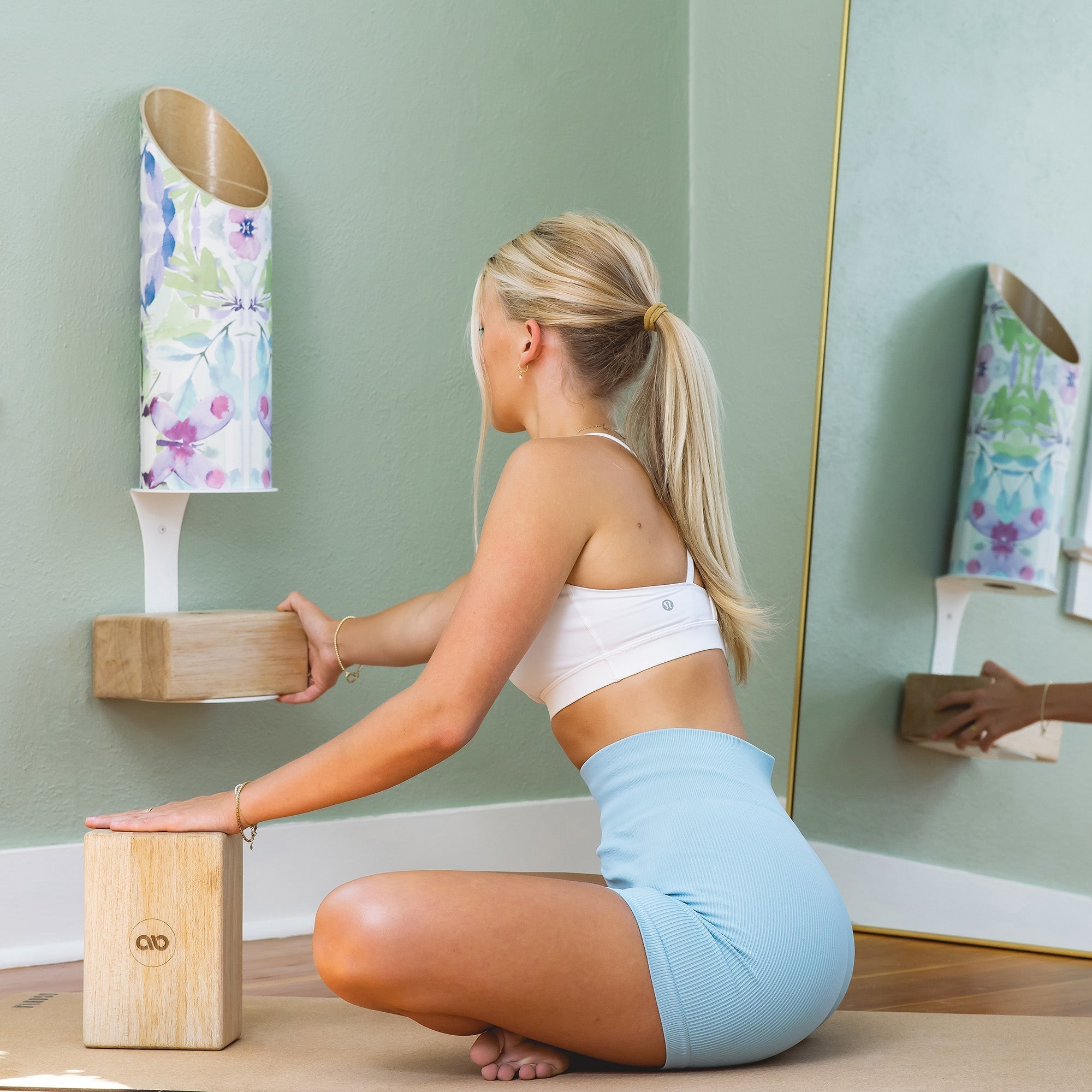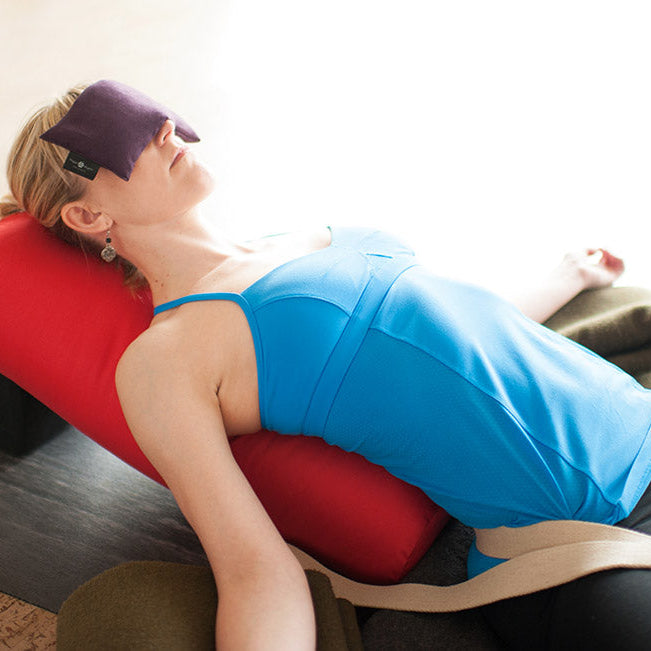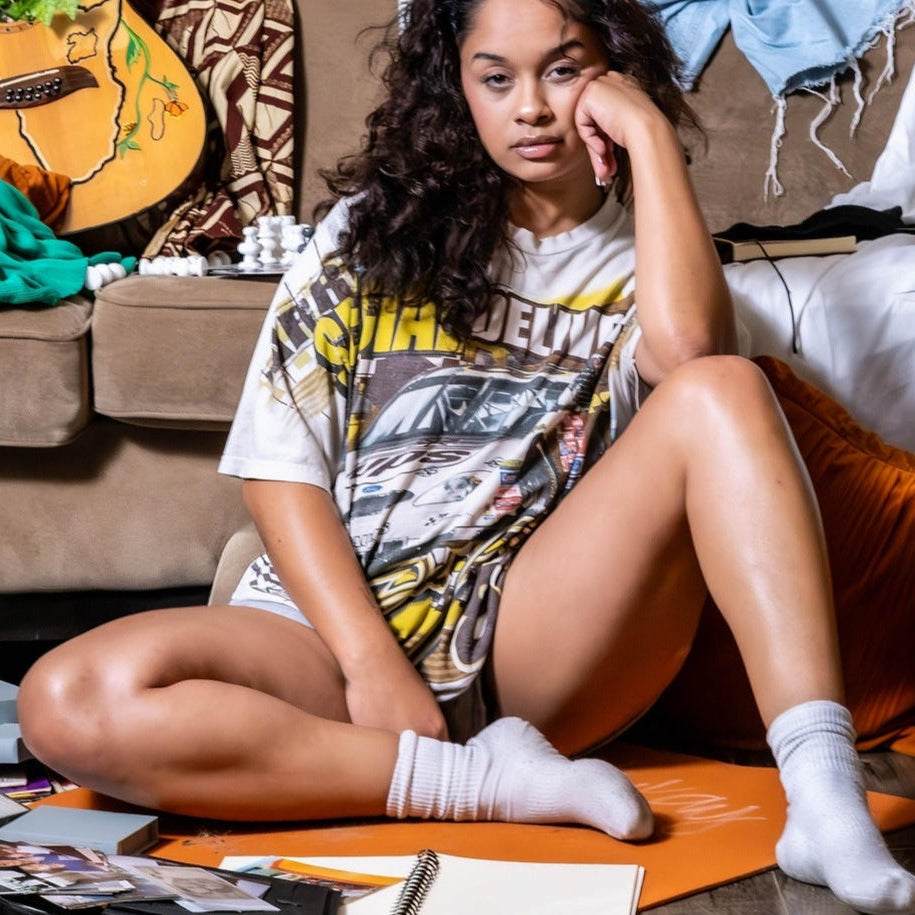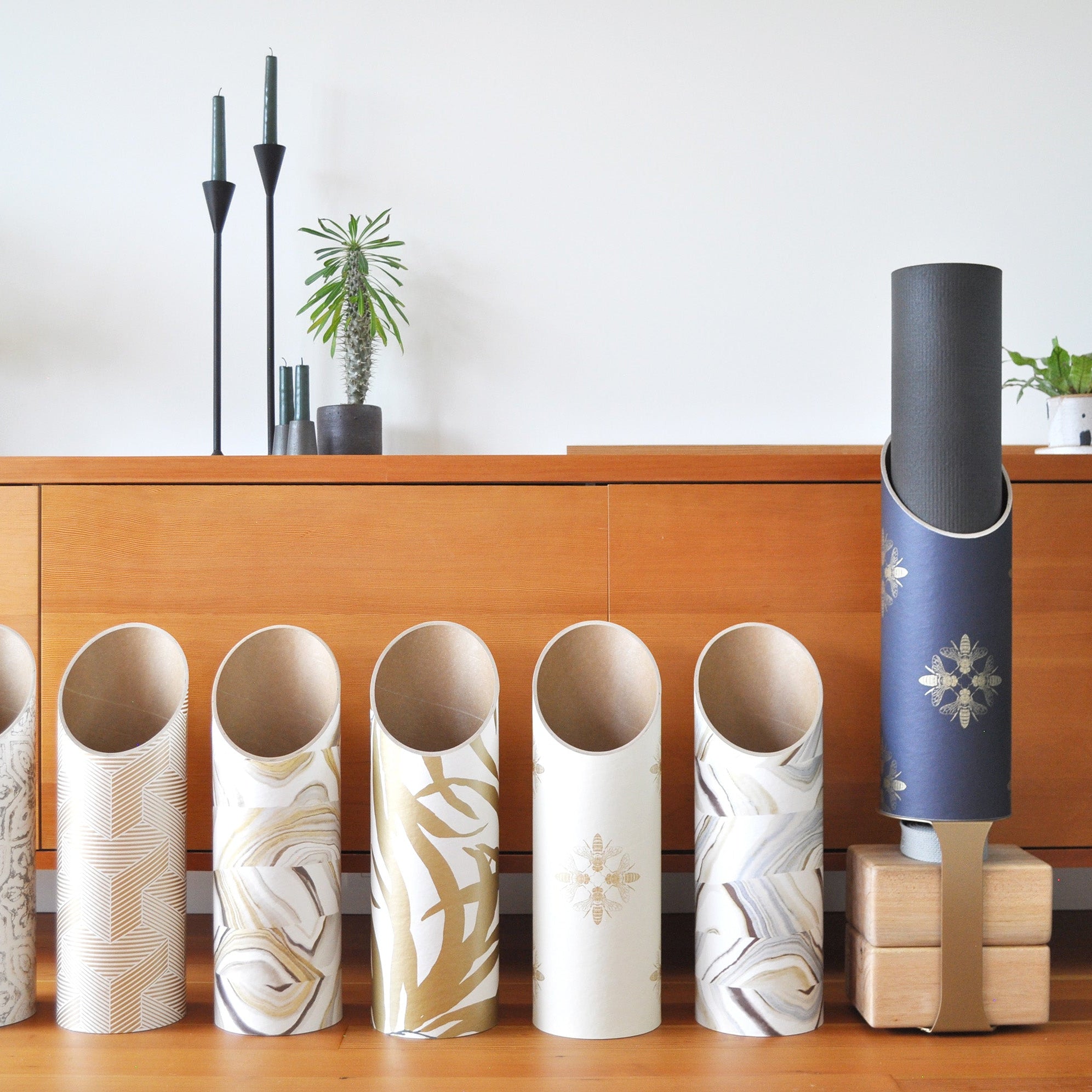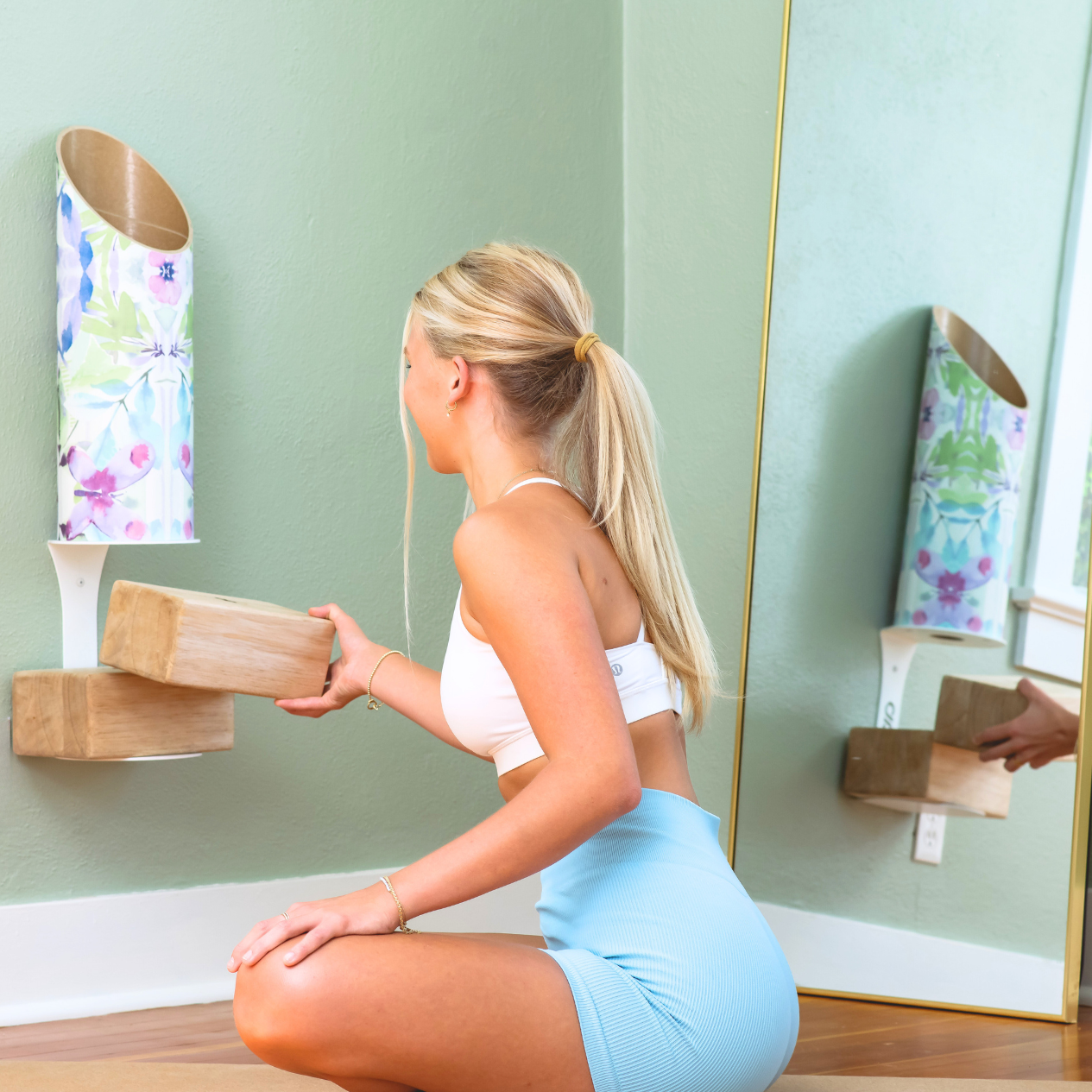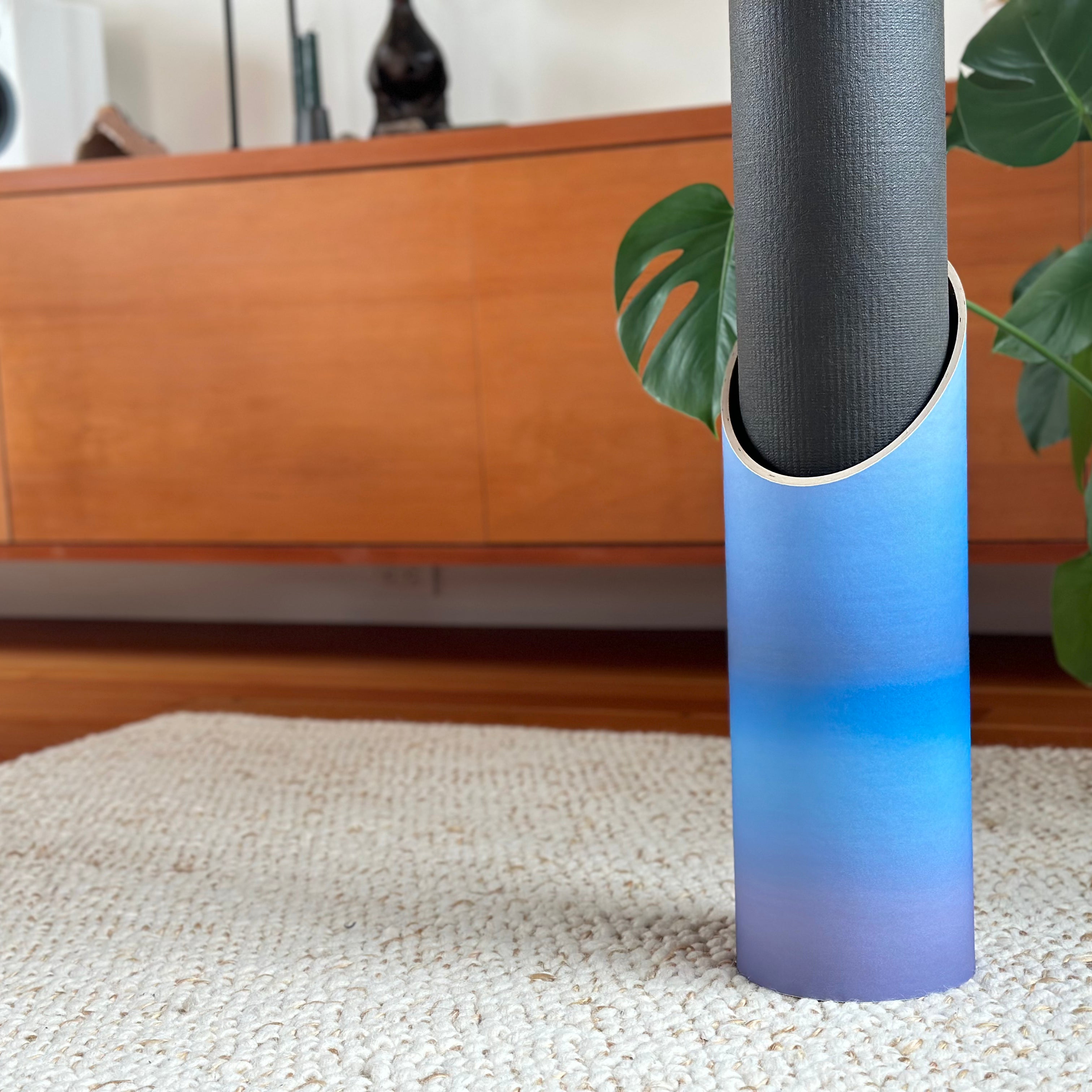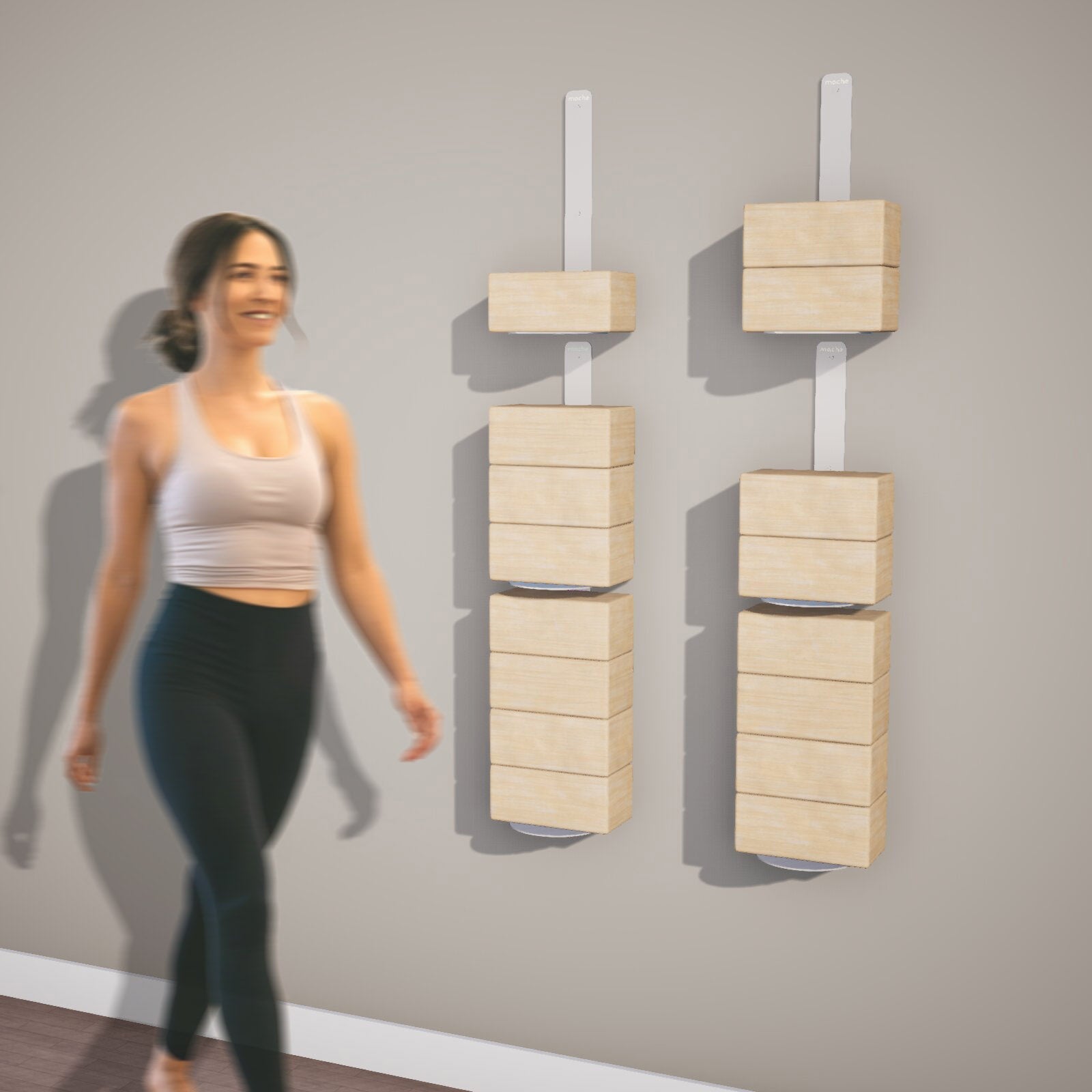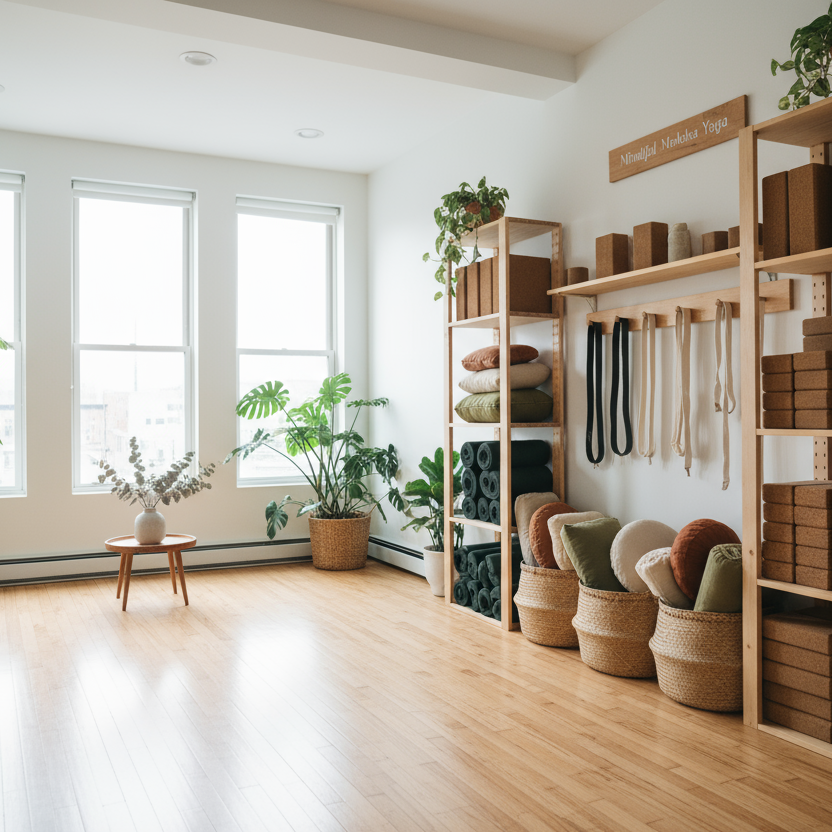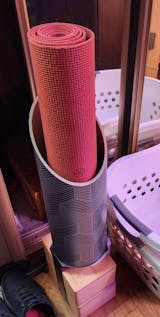Hello friends,
It’s wild to think it’s been five years since we were all figuring out how to cue a Sun Salutation while muting Zoom participants and wondering if the dog walking across our laptop screen could pass as the new “studio assistant.”
As a wellness designer, sustainable interior designer, and mindful yoga teacher, I’ve had a front-row seat to the changes our industry has gone through since 2020. I’ve also worked closely with many studio owners, both in designing physical spaces and in building sustainable systems for their businesses and communities.
COVID-19 wasn’t just a disruption — it was an unexpected accelerator for innovation, accessibility, and heart-centered leadership in yoga. Of course, I would never gloss over the financial hardships, the grief of closing physical spaces, and the stress we all carried. But I also believe in honoring the growth that emerged from those ashes.
Here’s my perspective on the top five ways our industry has been positively transformed since the pandemic.

1. The Explosion of Hybrid Yoga Models
Pre-2020, most yoga studios saw livestreaming as a fringe add-on, if they thought about it at all. Some teachers occasionally uploaded a class to YouTube, but it wasn’t the norm. Then came the lockdowns, and suddenly we were all learning about ring lights, microphone placement, and whether our living room rug was “Zoom-worthy” (the struggle is still very real on that one).
Five years later, hybrid models are here to stay — and they’re not just a survival tactic. They’re an incredible growth opportunity.
For studio owners, this shift has meant:
-
Global reach — Your 6:30 p.m. flow might now have participants in Boston, Bali, and Berlin.
-
Retention booster — Members who travel for work or family can still keep their class schedule from anywhere.
-
New income streams — Recorded class libraries, on-demand subscriptions, and virtual workshops add revenue without adding rent.
From a wellness design perspective, I’ve helped studios integrate hybrid teaching into their physical layouts — built-in tech stations, acoustic wall treatments, and camera angles that make your in-person space feel intimate online. This is sustainable business thinking: one physical space serving multiple audiences.

2. A Deepened Focus on Accessibility and Inclusion
Before COVID-19, accessibility in yoga was often discussed but rarely prioritized in mainstream studios. The shift to online classes opened the door for many who previously couldn’t attend in-person for reasons like mobility challenges, transportation limitations, social anxiety, or lack of local options.
Suddenly, students who felt excluded from “boutique studio culture” could roll out a mat at home and be part of the experience without worrying about parking, studio etiquette, or whether they had the “right” leggings.
This accessibility conversation didn’t vanish once we reopened. In fact, many studios have doubled down on:
-
Sliding scale and donation-based pricing
-
Closed captioning for online classes
-
Chair and wall-based modifications
-
Classes in multiple languages
-
Community partnership programs to bring yoga to schools, shelters, and elder care facilities
As a sustainable interior designer, I also see accessibility now influencing physical spaces more than before — from ADA-compliant entries to props designed for a range of bodies and abilities.
The pandemic reminded us that yoga is about meeting people where they are, and for many studios, that philosophy is now literally built into the walls.

3. A Renaissance of Outdoor and Nontraditional Spaces
Remember when park yoga was the “emergency workaround” because indoor classes were prohibited? Now it’s a seasonal staple for many studios — and an entry point for new students who might have felt intimidated indoors.
The same goes for nontraditional venues:
-
Rooftops
-
Wineries
-
Beaches
-
Botanical gardens
-
Corporate office terraces
This expansion beyond the four walls not only kept us practicing during lockdown but also reintroduced yoga as a community activity rather than a boutique commodity.
From a design standpoint, outdoor practice spaces have prompted studios to invest in portable flooring, sound systems, and weather-friendly props. It’s also led to creative partnerships with local businesses — a winery gets happy customers after a vinyasa-and-vino event, while the studio builds brand visibility.
The truth is, COVID-19 nudged us to see that “studio” is a concept, not a fixed address. And that flexibility has been a gift.

4. A Surge in Mindful Business Practices
The pandemic was a crash course in resilience and adaptability. Many owners I’ve spoken with now run leaner, more intentional operations because they had to simplify during lockdown.
Before, there was often pressure to offer a packed class schedule, maintain a high-cost retail boutique, or constantly host big-name visiting teachers. When those weren’t options, owners discovered the value of:
-
Smaller, more sustainable class schedules
-
Multi-use spaces that host yoga and wellness workshops, meditation groups, or community circles
-
Flexible staffing models
-
Conscious inventory practices (goodbye, overstocked retail shelves!)
This isn’t just better for the bottom line — it’s better for the planet. Fewer physical products, smarter energy use, and more efficient space design align perfectly with sustainable business principles.
I’ve worked with several studios post-pandemic to reconfigure spaces for multiple purposes — for example, a prop storage wall that doubles as an acoustic backdrop for livestream classes. These smart design choices are part of the reason many studios are thriving today.

5. A Return to Yoga’s Heart
If there’s one thing COVID-19 stripped away, it was the illusion that yoga is just a “fitness class.” The emotional and mental health toll of the pandemic reminded both teachers and students that yoga’s deeper teachings — breath, mindfulness, compassion — are not luxuries; they are lifelines.
During lockdown, we saw more pranayama circles, guided meditations, yoga nidra sessions, and community check-ins. Virtual as well as brick-and-mortar yoga studios became hubs for emotional resilience as much as physical practice.
Today, this heart-centered approach is still shaping programming:
-
Themed workshops on stress reduction, grief support, and emotional balance
-
Teacher training modules that emphasize accessibility, ethics, and trauma-informed teaching
-
Community discussion nights blending philosophy with modern life challenges
For me, as both a designer and teacher, this is the most beautiful outcome of all — studios as sanctuaries, not just workout spots. When we design with intention, the space itself supports that depth, whether through calming color palettes, natural materials, or quiet meditation nooks.

Personal Reflections as a Wellness Designer + Yoga Teacher
Looking back, the pandemic was like a forced yoga pose we didn’t want to hold — uncomfortable, revealing, and strangely transformative if we stayed with it and kept breathing.
As a designer, I’ve been inspired to create studio spaces that are:
-
Tech-friendly yet still warm and human
-
Flexible enough to adapt to changing needs
-
Grounded in sustainability so they’re resilient in the long term and not undermining health and wellness goals
As a teacher, I’ve been reminded that yoga thrives when it’s shared with love, curiosity, and openness — whether in a studio, a park, or on a laptop in someone’s living room.
And as a member of this global yoga community, I feel deep gratitude for the ways we’ve shown up for each other. The pandemic could have fractured us, but in many ways, it wove us closer together.

Looking Ahead: What the Next Five Years May Hold
The momentum we’ve built doesn’t have to fade. In fact, if we keep innovating, yoga can become even more accessible, sustainable, and impactful.
Here’s what I predict (and hope for) in the next chapter:
-
Even more integration of wellness services — massage, breathwork, sound healing, mental health support under one roof.
-
Sustainably built studios — from reclaimed wood floors to plastic-free props.
-
Global collaboration — online teacher swaps and international retreats that merge virtual and physical experiences.
-
Data-informed wellness — wearable tech integrating with class feedback to tailor sessions to student needs.
If we learned anything from 2020, it’s that change is inevitable, and adaptability is everything. Our role as studio owners and teachers is to keep evolving without losing sight of yoga’s essence.

Final Thoughts
Five years later, I can honestly say: the yoga industry is stronger, more creative, and more connected than it’s ever been. COVID-19 was the test we didn’t sign up for, but it revealed our capacity to innovate without losing the soul of the practice.
So, dear studio owners — keep streaming, keep meeting in the park, keep making your space accessible to all bodies and backgrounds, keep leading with heart. The ripple effects of what you do reach farther than you can see.
Here’s to the next five years of growth, resilience, and connection — on and off the mat.
With warmth and gratitude,
Brienne Derosier
Wellness Designer | Sustainable Interior Designer | Mindful Yoga Teacher


